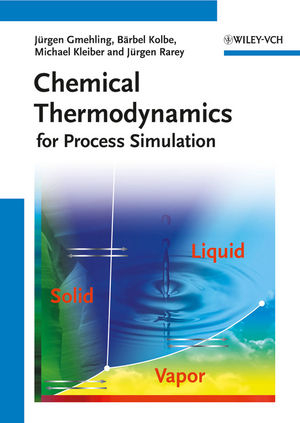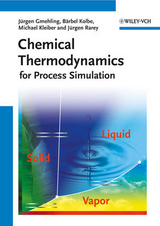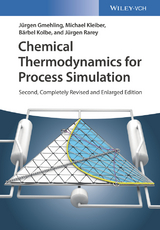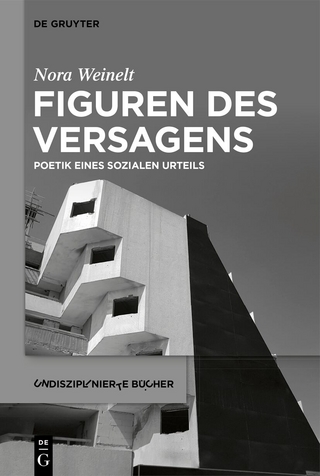Chemical Thermodynamics
Wiley-VCH (Verlag)
978-3-527-31277-1 (ISBN)
- Titel erscheint in neuer Auflage
- Artikel merken
For a deeper understanding additional problems are given at the end of each chapter. To solve the complex problems prepared Mathcad files, Excel files or the DDBSP Explorer version can be accessed via the Internet.
While written for an advanced level, the text is easy to understand for every chemical engineer and chemist with a basic education in thermodynamics and phase equilibria, teaching students the engineering perspective of thermodynamics but also of interest to all companies active in chemistry, pharmacy, oil and gas processing, petrochemistry, refinery, food production, environmental protection and engineering.
Thermodynamik aus ingenieurwissenschaftlicher Sicht: Hier kommt eines der seltenen Werke, das thermodynamische Grundkonzepte konsequent auf prozesstechnische Probleme aus der Praxis überträgt. Beim Umsetzen des Stoffs helfen Ihnen zahlreiche Beispiele (mit Lösungswegen) und Algorithmen zur Ermittlung von thermophysikalischen Eigenschaften und Kenndaten von Phasengleichgewichten. Ausführlich diskutiert wird auch die Thermodynamik von Stofftrennverfahren.
[Interessenten: Ingenieurstudenten; Unternehmen aus den Bereichen Chemie, Pharmazie, Erdöl- und Erdgasverarbeitung, Petrochemie, Raffinerie, Nahrungsmittelproduktion, Umweltschutz]
Jürgen Gmehling studied chemical engineering in Essen and chemistry at the University of Dortmund, where he gained his doctorate in inorganic chemistry in 1973. From 1977-1978 he worked with Prof. J.M. Prausnitz at the Department of Chemical Engineering in Berkeley, California, before taking up his present post as Professor of Chemical Engineering at the University of Oldenburg in 1989. He is also president and CEO of DDBST GmbH, Oldenburg, as well as cofounder of LTP GmbH, part of the Carl von Ossietzky University of Oldenburg. Professor Gmehling has received various awards, such as the Arnold-Eucken Prize from the GVC, the Rossini Lecture Award 2008 from the International Association of Chemical Thermodynamics, and the Gmelin-Beilstein Denkmünze from the GDCh. His research is concentrated on the computer-aided synthesis, design and optimization of chemical processes. After graduating in chemical engineering, Bärbel Kolbe completed her thesis in 1983 at the University of Dortmund in the research group led by Jürgen Gmehling, with whom she continued to work for another three years. During this time she participated in the publication of the Dechema Chemistry Data Series on VLE as well as the first edition of this book in German. Dr. Kolbe has been working for over twenty years as a senior process engineer first for Krupp Koppers GmbH and, since 1997, for ThyssenKrupp Uhde. The main focus of her research is on thermophysical properties, thermal separation technology and new processes. After graduating in mechanical engineering, Michael Kleiber worked as a scientific assistant at the TU Brunswick, where he completed his thesis in 1994. After this, he worked for the former Hoechst AG and its successors in the fields of process development, process simulation and engineering calculations, before moving to ThyssenKrupp Uhde as a Chief Development Engineer. Dr. Kleiber is a member of the German Board of Thermodynamics and contributor to several standard works on process engineering, such as the VDI Heat Atlas, Winnacker-Küchler and Ullmann's Encyclopedia of Industrial Chemistry. Jürgen Rarey studied chemistry and gained his PhD in chemical engineering. He has held a permanent position at the University of Oldenburg in Prof. Gmehling's group since 1989, the same year he cofounded DDBST GmbH. For the past 20 years he has taught many courses on applied thermodynamics for chemical process simulation for external participants from industry both in Oldenburg, as well as in-house for companies from around the world. Dr. Rarey is also an honorary professor in Durban, South Africa.
INTRODUCTION
PVT BEHAVIOR OF PURE COMPONENTS General Description Caloric Properties
Ideal Gases
Real Fluids
Equations of State
CORRELATION AND ESTIMATION OF PURE COMPONENT PROPERTIES
Characteristic Physical Property Constants
Temperature-Dependent Properties
Correlation and Estimation of Transport Properties
PROPERTIES OF MIXTURES
Property Changes of Mixing
Partial Molar Properties
Gibbs-Duhem Equation
Ideal Mixture of Ideal Gases
Ideal Mixture of Real Fluids
Excess Properties
Fugacity in Mixtures
Activity and Activity Coefficient
Application of Equations of State to Mixtures
PHASE EQUILIBRIA IN FLUID SYSTEMS
Thermodynamic Fundamentals
Application of Activity Coefficient Models
Calculation of Vapor-Liquid Equilibria Using gE-Models
Fitting of gE-Model Parameters
Calculation of Vapor-Liquid Equilibria Using Equations of State
Conditions for the Occurrence of Azeotropic Behavior
Solubility of Gases in Liquids
Liquid-Liquid Equilibria
Predictive Models
CALORIC PROPERTIES
Caloric Equations of State
Enthalpy Description in Process Simulation Programs
Caloric Properties in Chemical Reactions
The G-Minimization Technique
ELECTROLYTE SOLUTIONS
Introduction
Thermodynamics of Electrolyte Solutions
Activity Coefficient Models for Electrolyte Solutions
Dissociation Equilibria
Influence of Salts on the Vapor-Liquid Equilibrium Behavior
Complex Electrolyte Systems
SOLID-LIQUID EQUILIBRIA
Thermodynamic Relations for the Calculation of Solid-Liquid Equilibria
Salt Solubility
Solubility of Solids in Supercritical Fluids
MEMBRANE PROCESSES
Osmosis
Pervaporation
POLYMER THERMODYNAMICS
Introduction
gE-models
Equations of State
Influence of Polydispersity
APPLICATIONS OF THERMODYNAMICS IN SEPARATION TECHNOLOGY
Verification of Model Parameters Prior to Process Simulation
Investigation of Azeotropic Points in Multicomponent Systems
Residue Curves, Distillation Boundaries, and Distillation Regions
Selection of Entrainers for Azeotropic and Extractive Distillation
Selection of Solvents for Other Separation Processes
Examination of the Applicability of Extractive Distillation for the Separation of Aliphatics from Aromatics
ENTHALPY OF REACTION AND CHEMICAL EQUILIBRIA
Enthalpy of Reaction
Chemical Equilibrium
Multiple Chemical Reaction Equilibria
SPECIAL APPLICATIONS
Formaldehyde Solutions
Vapor Phase Association
PRACTICAL APPLICATIONS
Flash
Joule-Thomson Effect
Adiabatic Compression and Expansion
Pressure Relief
Limitations of Equilibrium Thermodynamics
INTRODUCTION TO THE COLLECTION OF EXAMPLE PROBLEMS
Mathcad Examples
Examples Using the Dortmund Data Bank (DDB) and the Integrated Software Package DDBSP
Examples Using Microsoft Excel and Microsoft Office VBA
APPENDIX A Pure Component Parameters
APPENDIX B Coefficients for High Precision Equations of State
APPENDIX C Useful Derivations
APPENDIX D Standard Thermodynamic Properties for Selected Electrolyte Compounds
APPENDIX E Regression Technique for Pure Component Data
APPENDIX F Regression Techniques for Binary Parameters Appendix G Ideal Gas Heat Capacity Polynomial Coefficients for Selected Compounds
APPENDIX H UNIFAC Parameters
APPENDIX I Modified UNIFAC Parameters
APPENDIX J PSRK Parameters
APPENDIX K VTPR Parameters
Index
| Erscheint lt. Verlag | 22.2.2012 |
|---|---|
| Verlagsort | Weinheim |
| Sprache | englisch |
| Maße | 170 x 240 mm |
| Gewicht | 1592 g |
| Themenwelt | Geisteswissenschaften ► Sprach- / Literaturwissenschaft ► Anglistik / Amerikanistik |
| Naturwissenschaften ► Chemie ► Physikalische Chemie | |
| Technik ► Maschinenbau | |
| Schlagworte | Allg. Chemische Verfahrenstechnik • chemical engineering • chemical thermodynamics • Chemie • Chemische Thermodynamik • Chemische Verfahrenstechnik • Chemistry • Industrial Chemistry • Maschinenbau • mechanical engineering • process development • Technische u. Industrielle Chemie • thermodynamics • Thermodynamik • Verfahrensentwicklung |
| ISBN-10 | 3-527-31277-3 / 3527312773 |
| ISBN-13 | 978-3-527-31277-1 / 9783527312771 |
| Zustand | Neuware |
| Informationen gemäß Produktsicherheitsverordnung (GPSR) | |
| Haben Sie eine Frage zum Produkt? |
aus dem Bereich





